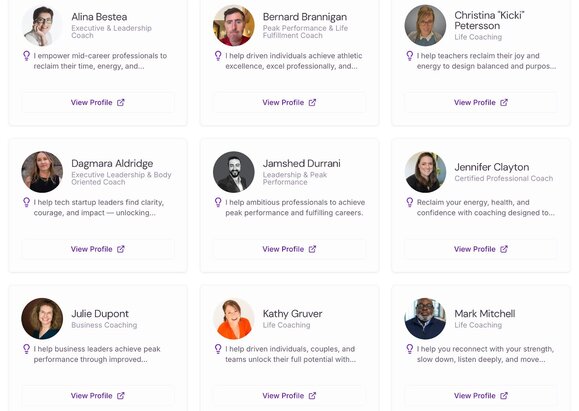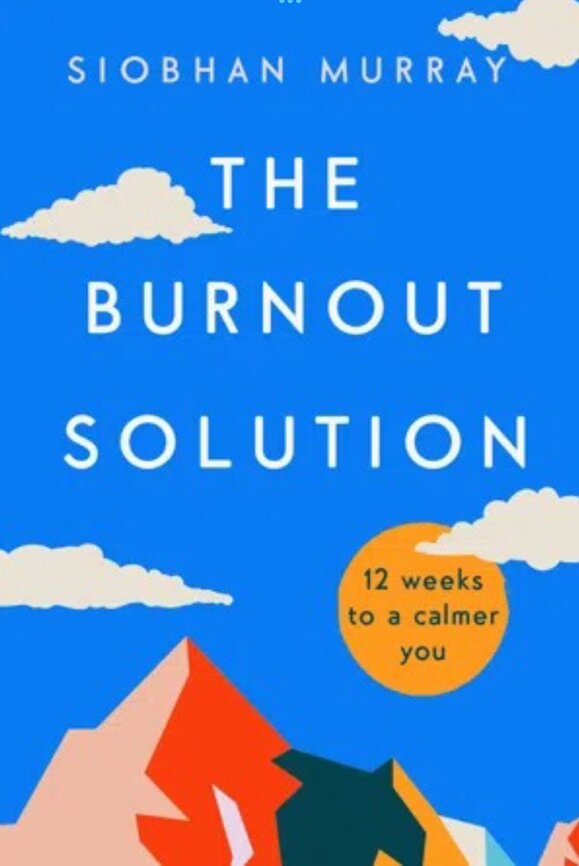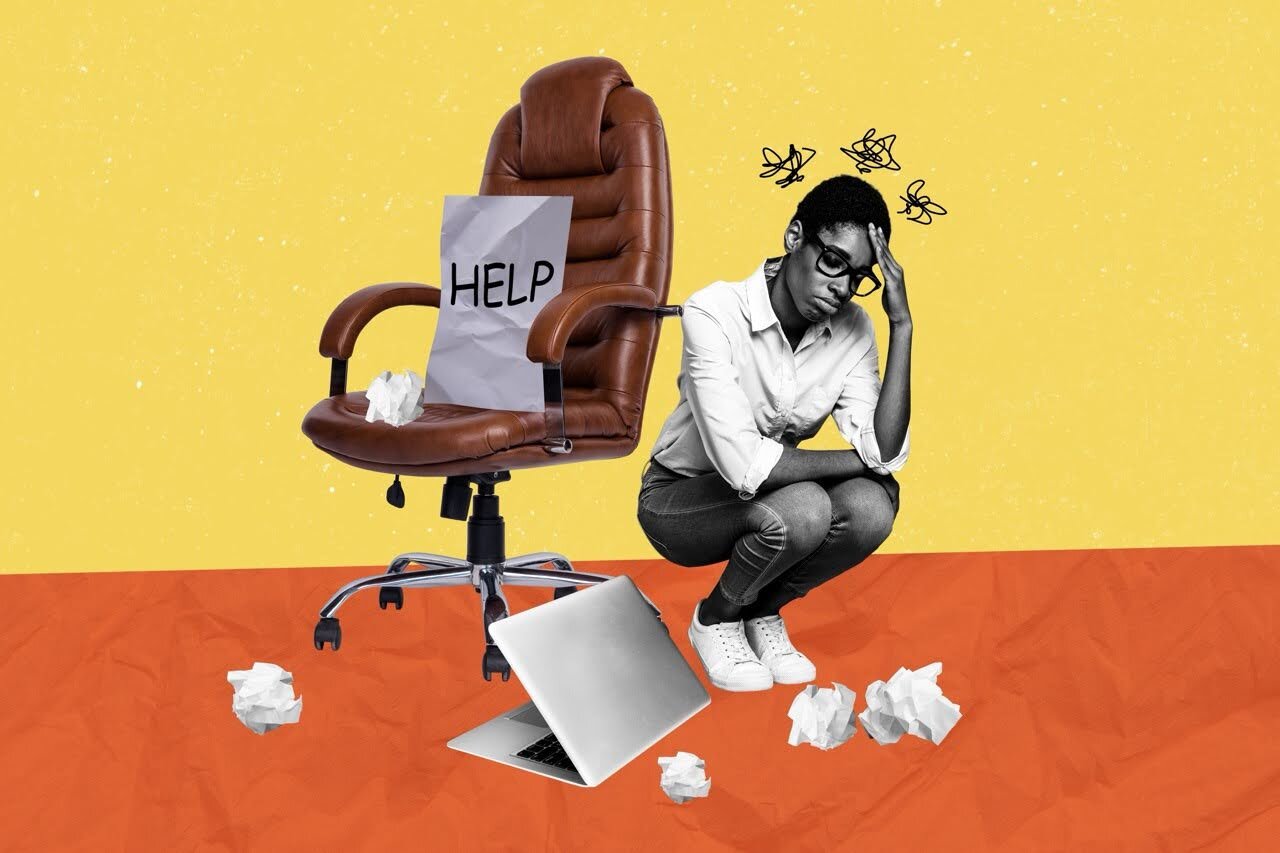In a world that praises productivity and glorifies exhaustion, keeping your inner flame alive has become both an art and a necessity. The line between ambition and burnout is as thin as the morning mist: you barely notice it until you’re already lost inside it.
That’s where burnout coaching steps in. It’s not about slowing down your dreams; it’s about learning how to breathe between them.
Professionals across industries from entrepreneurs to executives, teachers to healthcare providers are turning to work-life-balance coaching to rediscover energy, focus, and fulfillment. With the help of a burn out coach, the impossible balance between work and life begins to feel not only achievable but deeply human.
Understanding Burnout
Burnout doesn’t arrive like a storm; it seeps in quietly, disguising itself as diligence.
Definition
Burnout is a state of emotional, mental, and physical exhaustion caused by excessive and prolonged stress. It’s what happens when motivation runs faster than self-care.
Common Causes
- Workplace stressors that demand constant availability.
- Poor time management, leaving no room to breathe.
- Lack of boundaries, especially in remote or hybrid environments.
- High expectations — often self-imposed by those who want to excel.
Signs and Symptoms
Burnout speaks softly at first: a sigh before opening your laptop, the weight of dread on Sunday evenings. Then it grows louder.
- Persistent fatigue and lack of focus.
- Emotional detachment or cynicism about work.
- Decreased motivation or creativity.
- Physical symptoms like insomnia or headaches.
- Declining performance despite long hours.
A skilled work life balance coach helps professionals recognize these signs early. Awareness, after all, is the first step toward transformation.
Examples from Everyday Life
Consider Julia, a marketing manager who once thrived on tight deadlines. Over time, her twelve-hour workdays blurred together, and weekends became extensions of Monday. She began forgetting meetings, resenting her own ambition, and feeling trapped by the success she had built.
Then there’s Elias, a dedicated healthcare worker who spent years caring for others while neglecting his own rest. His compassion slowly turned to numbness, not because he didn’t care anymore, but because his emotional reserves had quietly run dry.
And Marina, a startup founder, who mistook constant connectivity for productivity. Her business grew, but her joy shrank. It wasn’t until she met a burn out coach that she realized rest was not the enemy of growth but its hidden partner.
These stories echo in countless offices, studios, and homes around the world. Burnout wears many faces, yet behind each one lies the same truth: the human spirit was never meant to run without pause.
Assessment and Identification
Before healing begins, there must be understanding. The first step in addressing burnout is an accurate, compassionate assessment, one that looks beyond symptoms and into the rhythm of a person’s daily life.
Coaches use various tools such as:
- Questionnaires and self-assessment surveys that highlight stress patterns.
- One-on-one interviews to explore work environment and emotional triggers.
- The Maslach Burnout Inventory, a respected framework to measure emotional exhaustion and detachment.
Through this process, burnout coaching doesn’t just diagnose exhaustion, it offers a mirror for reflection.
Real-Life Examples
Take Elena, a senior project coordinator who couldn’t explain why she felt detached from a job she once loved. Her coach began with a simple self-assessment survey that revealed she rated herself low on personal accomplishment but high on emotional exhaustion. Through conversation, they uncovered that Lena’s perfectionism was silently draining her joy. The assessment became not just a diagnostic tool but a doorway to rediscovering purpose.
Or Mateo, an architect who came into a session describing his constant headaches and irritability as “just part of the job.” His coach introduced the Maslach Burnout Inventory, which quantified his emotional fatigue and depersonalization. Seeing the results in numbers helped him recognize that what he was experiencing wasn’t weakness, it was burnout. That moment of awareness became the turning point toward self-compassion and balance.
When you meet with a burn out coach, you’re not being evaluated. You’re being listened to. You’re given space to articulate what’s been buried beneath the pressure to perform.
Resilience Building
If burnout is the body’s cry for balance, resilience is its song of recovery.
Building resilience is the foundation of every burn out coaching journey. It’s what helps professionals withstand life’s inevitable stressors without collapsing under their weight.
Realistic Goal Setting
Sometimes burnout isn’t caused by failure, it’s caused by trying to succeed at everything, all at once.
A skilled coach helps set goals that are meaningful yet attainable. Together, you untangle urgency from importance and build sustainable habits around focus.
At DreamCoachMatch coaches, you can find experts who specialize in goal-setting and achievement, ensuring that your ambitions stay aligned with your well-being.
Social Support Systems
Human connection heals. Burnout often thrives in isolation: late nights at the desk, muted laughter in the next room. A work-life-balance coaching approach encourages clients to cultivate support networks: colleagues, mentors, and loved ones who remind you that you’re not alone.
Self-Care Routines
Self-care isn’t indulgence; it’s maintenance for the soul. Coaches guide professionals toward routines that nourish energy and joy from exercise and journaling to hobbies that reconnect them to curiosity and play.
These aren’t just temporary fixes. They’re the anchors of resilience.
Example: Relearning How to Pause
When Nadia, a lawyer and mother of two, began burnout coaching, she thought resilience meant “pushing through.” Her coach gently reframed that belief. Together, they restructured her week to include intentional breaks: morning walks without her phone, quiet dinners where work talk was off limits, a Sunday evening ritual of planning only what brought peace.
At first, it felt unnatural to stop. But over weeks, Nadia noticed her creativity returning, her laughter becoming more spontaneous. Her resilience wasn’t built through force; it was restored through softness, the courage to pause and refill.
Resilience isn’t armor; it’s flexibility. It’s learning how to bend without breaking, and remembering that even strong trees need stillness to grow.

Find the right coach on DreamCoachMatch who specializes in resilience building and personalized strategies.
Core Strategies for Work-Life Balance
To maintain balance is to learn the language of limits, and to speak it kindly.
Here are the cornerstones of burnout coaching that help professionals stay grounded and energized.
Setting Boundaries
Learning to say no can be revolutionary. A work life balance coach teaches the art of setting limits: gracefully, firmly, and without guilt. You learn to separate availability from value, to protect your time as the sacred resource it is.
Time Management
It’s not about doing more but doing what matters. Coaches use prioritization tools, scheduling systems, and reflection exercises to restore structure and meaning.
Apps like Trello or Todoist can complement your sessions, turning to-do lists into mindful task rituals.
Mindfulness and Stress Reduction
Stillness is not laziness; it’s leadership.
Through mindfulness, deep breathing, and journaling, professionals reconnect with their inner calm. These practices help regulate emotions and reduce cortisol levels, a gentle antidote to chaos.
Workplace Adaptations
True change often requires organizational support. Coaches encourage dialogue with employers about flexible schedules, hybrid models, or wellness programs. When the workplace evolves alongside you, burnout loses its grip.
Find a perfect coaching strategy for yourself!
Example: The Power of One Boundary
For Daniel, a marketing executive, burnout wasn’t caused by a toxic job but by endless “yeses.” His burn out coach challenged him to set one clear boundary: no emails after 7 p.m. The first week was uncomfortable; the second felt liberating. Within a month, he noticed he was sleeping better, engaging more fully with his family, and even performing better at work.
Sometimes the smallest boundary can become the biggest act of self-respect.
Evaluating Burnout Coaching Effectiveness
Success in coaching burnout isn’t measured by hours spent but by energy regained.
Evaluation helps track progress and ensures that the process stays aligned with your evolving needs. Coaches at DreamCoachMatch help clients measure growth using:
- Surveys and self-assessments that track emotional exhaustion and satisfaction levels.
- Cognitive-behavioral techniques that identify shifts in mindset and thought patterns.
- Ongoing evaluations to adapt strategies as your confidence and resilience expand.
These metrics are more than numbers, they’re the map of your comeback.
Example: Tracking Real Change
Sophia, a financial analyst, began burnout coaching feeling constantly drained and disengaged. Her coach had her complete weekly self-assessments and reflect on her energy levels and stress triggers. Over time, Sophia noticed measurable improvements: fewer days of fatigue, increased focus during meetings, and more genuine enthusiasm for her projects. Seeing this progress quantified not only validated her efforts but also motivated her to continue practicing the strategies she had learned.

Track your coaching progress and visualize improvement over time with DreamCoachMatch tools.
Supporting Resources for Burnout
Healing is a multi-dimensional journey. Alongside coaching, several tools can help you sustain progress.
Digital Tools and Apps
Many clients find that combining burnout coaching with digital tools accelerates their recovery.
- Headspace & Calm: Guided meditation apps that cultivate mindfulness.
- Trello & Todoist: Tools for time management and task organization.
Example: Leo, a software developer, struggled to switch off after work. His coach recommended using Headspace for guided meditation and Trello to organize his tasks visually. By integrating these tools, Leo created small rituals of pause and reflection, allowing him to leave work at work and reclaim his evenings.
Books and Literature
Reading about burnout can validate your experience and offer comfort in knowing you’re not alone.
Burnout: The Secret to Unlocking the Stress Cycle – Emily & Amelia Nagoski

The Burnout Solution: 12 Weeks to a Calmer You – Siobhan Murray

The Burnout Challenge – Michael P. Leiter & Christina Maslach

Example: Anika, a teacher experiencing chronic stress, read Burnout: The Secret to Unlocking the Stress Cycle. Guided by her work-life-balance coach, she applied the strategies in her daily schedule — adding short breaks and reflective journaling — which helped her regain energy and emotional balance.
Workshops and Seminars
Growth flourishes in community. Participating in structured programs can strengthen resilience and provide community support.
- Thrive Global Workshops: Expert-led sessions focusing on workplace well-being.
- American Institute of Stress Seminars: Evidence-based techniques for resilience.
- Company Wellness Programs: Many organizations now include burnout coaching as part of their employee care initiatives.
Example: Rahul, a healthcare professional, attended a Thrive Global Workshop while working with his burn out coach. The combination of interactive learning and one-on-one coaching helped him identify triggers of chronic stress and implement sustainable coping strategies.
Burnout Awareness in High-Stress Professions
Some careers carry a heavier emotional toll. In high-pressure environments like law, healthcare, and finance, burnout isn’t a rare occurrence, it’s a cultural hazard.
Organizations are finally recognizing this. They’re integrating work-life-balance coaching programs, promoting flexible hours, and offering resilience training.
For professionals, this awareness means freedom: the chance to pursue excellence without self-destruction. A burn out coach in these industries becomes more than a guide — they’re a lifeline back to meaning.
Example: Isabella, an emergency room nurse, began to notice a creeping sense of detachment from patients. Through burnout coaching, she learned to implement mindfulness exercises between shifts and communicate boundaries with her team. Her coach also worked with her to establish a support network within the hospital. The result: improved job satisfaction, lower emotional fatigue, and renewed compassion for her work.
Manage Your Burnout with Coaching
The truth is simple: balance doesn’t appear; it’s built choice by choice, boundary by boundary.
Burnout coaching doesn’t erase ambition; it refines it. It teaches you to honor your drive without sacrificing your peace. It’s a journey from surviving to thriving, from overextension to equilibrium.
At DreamCoachMatch coaches, you’ll find professionals who specialize in work-life balance coaching and burn out coaching across every field. Whether you’re a leader trying to sustain performance, or a creative seeking clarity, there’s a coach ready to walk beside you.
Because the ultimate success story isn’t the one that ends in exhaustion, it’s the one where you’re still smiling when you reach the summit.






